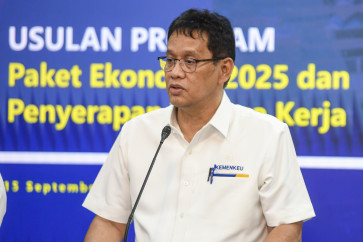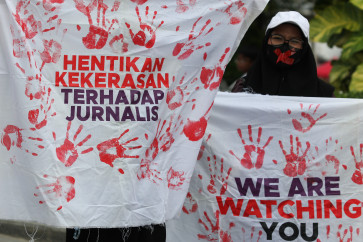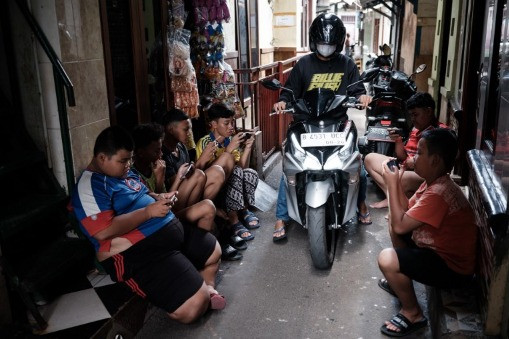Popular Reads
Top Results
Can't find what you're looking for?
View all search resultsPopular Reads
Top Results
Can't find what you're looking for?
View all search resultsEditorial: Protecting peatland
President Joko âJokowiâ Widodoâs special instruction to the environment and forestry minister last week to stop issuing new licenses for peatland cultivation and to conduct an overall review of all peatland-use permits is a strategic part of the effort to prevent forest and land fires and the hazardous air pollution they cause
Change text size
Gift Premium Articles
to Anyone
P
resident Joko 'Jokowi' Widodo's special instruction to the environment and forestry minister last week to stop issuing new licenses for peatland cultivation and to conduct an overall review of all peatland-use permits is a strategic part of the effort to prevent forest and land fires and the hazardous air pollution they cause.
He also stated at the Cabinet meeting last Friday that damaged peatland must be rehabilitated, virgin peatland must not be opened for any purpose and all involved in the fight against forest and land fires must use the same map to prevent overlaps.
To put it bluntly, companies can no longer convert active forests or peatland areas into monoculture plantations such as acacia for pulp and oil palm plantations.
Recent research by forestry scientists at the Bogor-based Center for International Forestry Research (CIFOR) found that the main cause of hazardous haze in Riau came from burning dried and deforested peatland, and not just the slashing-and-burning of forested areas, as commonly thought. The study found that peat swamps in their natural state were resistant to fire because they are damp underground, but can be highly flammable when they dry out and become degraded.
Research by Greenpeace has also revealed that left in its natural waterlogged condition, peatland rarely burns. Untouched tropical rainforest is similarly fire-resistant. However, two decades of forest and peatland destruction by the plantation sector have turned parts of Indonesia into a giant tinderbox.
Peatland soil is a store of a massive amount of carbon. When peatland is cleared and drained for plantations, it degrades and the carbon it stores starts to be released into the atmosphere as CO2 emissions. If peat soil catches fire, it can smolder away below the soil surface and is exceedingly difficult to extinguish.
The biggest challenge now is how to fully enforce the instruction and see to it that all regional administrations join the campaign to protect peatland and companies that violate the rules are severely punished to convey a strong message.
The one-map policy ' a comprehensive map of land ownership to provide clarity on the exact boundaries of land owned by companies ' should be fully implemented. Experience over the past decades has shown there is an acute lack of transparency when it comes to maps on land ownership. Without a centralized, public map, the task of pinpointing errant companies or landowners becomes murky.
The government also seems to have been reluctant to make its existing concession maps publicly available to public forest-monitoring platforms. If we are serious about tackling the appalling air pollution, the government must release data that will facilitate public monitoring.
The heavy haze, the worst in the past three decades, that has been blanketing Kalimantan, Sumatra, Singapore and Malaysia since September should be the incentive for the government, people and business community to take firm and bold measures to prevent a similar disaster.
Failure to do this will embolden the campaign now launched in Singapore and Malaysia for consumers to boycott Indonesian products such as pulp, paper and those made of palm oil.










